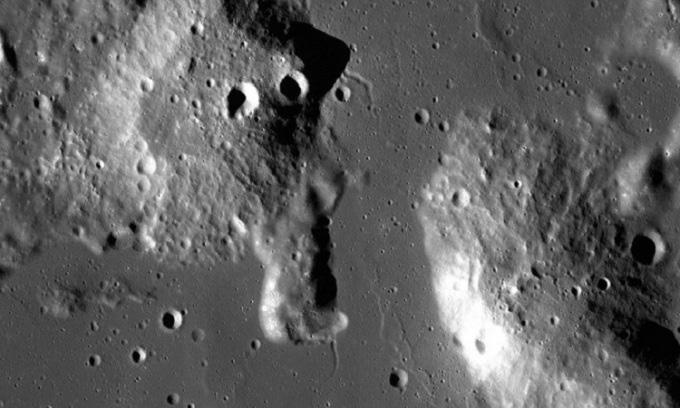NASA is about to study the mysterious rock dome on the Moon

Gruithuisen Dome on the Moon.
NASA's Artemis mission has the main goal of sending astronauts to the Moon to establish the first long-term settlement and learn the conditions necessary to send people to Mars. In addition, the program also plans a variety of science activities, including launching two instruments Lunar Vulkan Imaging and Spectroscopy Explorer (Lunar-VISE) and Lunar Explorer Instrument for space biology Applications (LEIA) to the Moon for exploration. Gruithuisen arch, a geological feature that has puzzled researchers for many years. The duo of devices will provide important data for NASA scientists.
According to Joel Kearns, deputy director of discovery at NASA's Science Mission Steering Committee, the study will first look at the geological record of early celestial bodies stored on the Moon by viewing Consider a rare type of volcano. The second study will explore the effects of low gravity on the Moon and radiation environment on yeast, thereby identifying DNA damage and repair.
Lunar-VISE will probe the top of the Gruithuisen dome for 10 days. The researchers believe that the Gruithuisen dome was born from a viscous magma rich in silica with a granite-like composition. Lunar-VISE will explore how these domes form without liquid water or plate tectonics. This is a great mystery to space scientists.
Observations from the Lunar Reconnaissance Orbiter (LRO) confirmed that the Gruithuisen dome is different from the surrounding terrain, which has been covered with basaltic lava flows that have hardened since ancient times. What baffles researchers is how silicon-containing magma formed on the Moon. On Earth, silicon volcanoes often form when two conditions exist: water and plate tectonics. But on the Moon, these essential conditions are absent.
The LEIA instrument will conduct biological research on the Moon by feeding the yeast Saccharomyces cerevisiae and learning how it responds to the Moon's radiation and gravity. The data collected by the mission will complement information from previous biological studies, helping scientists determine the effects of radiation and gravity on the human body.
- Why did NASA bring so many Moon rocks but almost did not touch them?
- Astronauts can use water from the Moon
- NASA returned to the moon
- Two arches and pyramids on Mars
- New NASA research: Water and humans can be found on the Moon, so come back soon
- NASA: Moon's 'Crash' in 2008
- Great meteorite discovered on the moon
- Water on the moon may originate from Earth
- Researching the Moon, humanity has 'accidentally' made these things
- Mysterious cut bisects rocks over 10,000 years old in Saudi Arabia
- NASA revealed the time of the first immigration settlement on the Moon
- The ancient Greek philosopher was executed for understanding the Moon
 Van Allen's belt and evidence that the Apollo 11 mission to the Moon was myth
Van Allen's belt and evidence that the Apollo 11 mission to the Moon was myth The levels of civilization in the universe (Kardashev scale)
The levels of civilization in the universe (Kardashev scale) Today Mars, the sun and the Earth are aligned
Today Mars, the sun and the Earth are aligned The Amazon owner announced a secret plan to build a space base for thousands of people
The Amazon owner announced a secret plan to build a space base for thousands of people